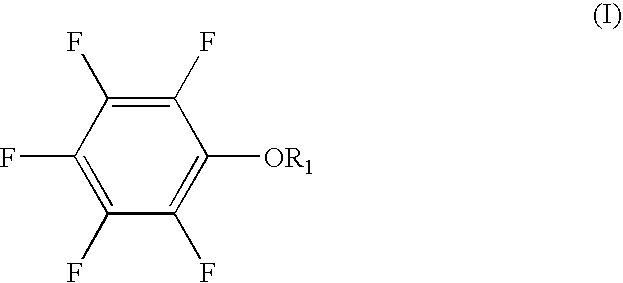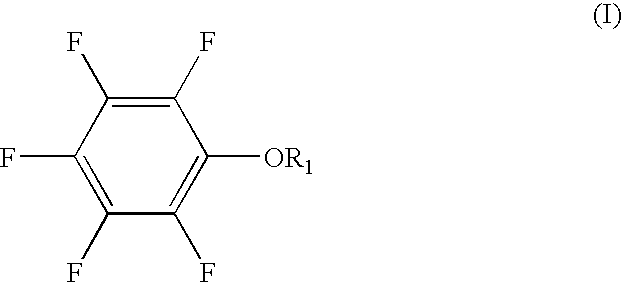Non-aqueous electrolytic solution and lithium secondary battery using the same
a technology of non-aqueous electrolysis and lithium secondary batteries, which is applied in the direction of non-aqueous electrolyte cells, cell components, electrochemical generators, etc., can solve the problems of not being satisfactory and 80% of the capacity retention of coin-shaped cells after 200 cycles, and achieve the effect of improving battery performance, particularly cycle characteristics
- Summary
- Abstract
- Description
- Claims
- Application Information
AI Technical Summary
Benefits of technology
Problems solved by technology
Method used
Image
Examples
example 1
(Preparation of Non-Aqueous Electrolytic Solution)
[0049] A non-aqueous solvent of EC:PC:MEC having a volume ratio of 30:5:65 was prepared. LiPF6 (electrolyte salt) was dissolved in the solvent to prepare a 0.9 M non-aqueous electrolytic solution. 0.5 wt. % of pentafluorophenyl methanesulfonate and 5 wt. % of vinylene carbonate were added to the non-aqueous electrolytic solution. The percentage was expressed based on the non-aqueous electrolytic solution.
(Preparation of Lithium Secondary Battery and Measurement of Battery Performance)
[0050] 90 wt. % of LiCoO2 (active positive electrode material), 5 wt. % of acetylene black (conductive material), and 5 wt. % of polyvinylidene fluoride (binder) were mixed. 1-methyl-2-pyrrolidone (solvent) was added to the mixture. A surface of aluminum foil was coated with the resulting solution. The mixture was dried, molded under pressure, and heated to form a positive electrode.
[0051] 95 wt. % of artificial graphite (active negative electrode ...
example 2
[0054] An electrolytic solution and an 18650 battery were prepared in the same manner as in Example 1, except that 1 wt. % of pentafluorophenyl methanesulfonate and 2 wt. % of vinylene carbonate were added to the non-aqueous electrolytic solution. The battery performance was measured after 200 cycles. The retention of the discharging capacity relative to the initial discharging capacity was 85.1%. The conditions for preparation of the battery and the battery performance thereof are set forth in Table 1.
example 3
[0055] An electrolytic solution and an 18650 battery were prepared in the same manner as in Example 1, except that 1 wt. % of pentafluorophenyl methanesulfonate, 2 wt. % of vinylene carbonate and 0.5 wt. % of dipropargyl oxalate were added to the non-aqueous electrolytic solution. The battery performance was measured after 200 cycles. The retention of the discharging capacity relative to the initial discharging capacity was 86.6%. The conditions for preparation of the battery and the battery performance thereof are set forth in Table 1.
PUM
 Login to View More
Login to View More Abstract
Description
Claims
Application Information
 Login to View More
Login to View More - R&D
- Intellectual Property
- Life Sciences
- Materials
- Tech Scout
- Unparalleled Data Quality
- Higher Quality Content
- 60% Fewer Hallucinations
Browse by: Latest US Patents, China's latest patents, Technical Efficacy Thesaurus, Application Domain, Technology Topic, Popular Technical Reports.
© 2025 PatSnap. All rights reserved.Legal|Privacy policy|Modern Slavery Act Transparency Statement|Sitemap|About US| Contact US: help@patsnap.com



